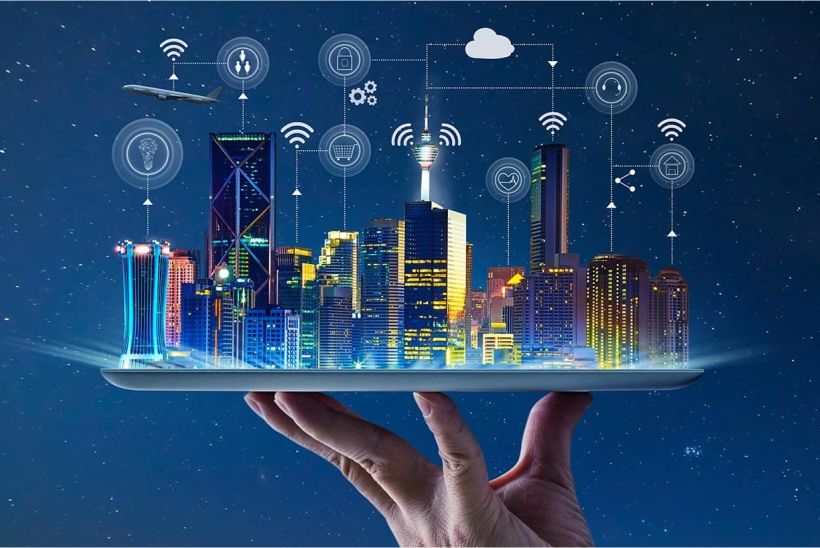For a long time, the idea of a truly connected world existed only in theories. But with the recent advancements in the field of IoT, it is now a practical future. However, in this blog we are going to talk about the present. It has not even been a decade since the IoT technology was introduced into real-world usage but the technocratic geniuses have ensured that it can be used to better our life experiences.
So, here are 5 IoT based devices that are already in usage currently by both individuals and industries across the world.
Wearable technology
Wearable devices are not so new to the world of tech anymore. From the iWatch to FitBit, various brands have developed their own usage of the ‘smartwatch’. But with the introduction of IoT powered wearable tech the industry has witnessed previously unforeseen revolutionary advancement.
Take for example the glucose monitoring wearable technology introduced for diabetes patients. It is a small circular device that can be worn anywhere on the skin and will keep a constant watch on the user’s glucose levels at all times. It houses a small electrode that senses the glucose levels in the blood and provides the data to a wireless monitoring device with the help of radio frequencies. Medical experts are quite marveled at the possibilities that this tech can provide and for patients who suffer from chronic diabetes this can eventually mean never having to suffer from a low or high glucose level again.
Smart city
Well, this is one entry into this list that can’t be bought, but nevertheless this was only a theoretical idea even a few years ago. San Francisco’s Paolo Alto is officially the first smart city to exist in the 21st century.
As of now the primary usage of IoT in Paolo Alto is to allow drivers to easily find a parking spot with the help of tech grids built into the city’s databases. The IoT constantly monitors this database and relays to drivers information regarding the availability of parking spots in various areas. The city soon aims to use this tech in ensuring the supply of electricity and water in an equitable manner throughout the various areas. If all governments were to integrate this tech and use it to its full capabilities it would mean never facing a power or water shortage ever again.
Smart agriculture
Agriculture is the foundation on which human society was built and it is perhaps the basis on which humanity will thrive in the years to come. With the rising levels of population, food shortage has been one of the primary problems that have been faced by humanity. To ensure that such a growing population can be provided with sufficient food a cheap and speedy method of agriculture is required.
And the solution has appeared in the form of amalgamation of farming and technology, IoT based technology to be precise. What developers are now calling smart greenhouses use this technology to constantly monitor and control different aspects of the weather and soil fertility to ensure that not even 1% of produced grains are wasted. Not only has this reduced labor costs and time required, but it has also led to a huge amount of reduction of greenhouse gas emissions that normal farming practices led to. The future of food undoubtedly lies in smart agriculture.
Supply chain management
The demands of the world are growing and the only way to ensure that people have what they need exactly when they need is through a highly robust supply chain management process. Imagine medicines reaching hospitals before doctors even realize they are going to need them. Or car parts waiting for you at the garage even before you know your car is going to break down. This is what IoT powered supply chain management is being able to deliver in the current times.
With the ability to constantly monitor inventory details in real-time and AI-powered delivery systems, industry-grade SCM processes are now becoming self-sufficient and smarter than ever. The primary goal here is to optimize the performance levels of a supply chain while also ensuring that real-life demands are kept in mind. With the help of a truly connected SCM process, this is now possible and data communication has also been heightened to light speed.
IoT powered vehicles
A smart vehicle is one thing, but an IoT powered one is completely another. While the former is fitted with an AI to guide the driver into achieving a heightened level of ease while driving the vehicle, what an IoT powered vehicle can do is understand every driver’s custom requirements. This means the vehicle can now make decisions for itself.
Imagine missing a ‘drive slow’ sign, well now you can’t! Because your car has seen it before you could and it has already slowed the speed down without you having to move a muscle. Your gas is running low? The vehicle’s systems have already made a call to the nearest gas station, rerouted you towards it, and also made payments in advance. The possibilities here are truly infinite and as scientists claim soon the driver’s seat can be left completely empty. The amount of safety and ease of access IoT powered vehicles are able to achieve is truly remarkable and we are only beginning to scratch the surface of its potentials.
With the ability to achieve a connected world, a connected society, and connected humanity – IoT technology is allowing us to move into the next step in human evolution. Machine learning is no longer a goal; rather the goal is to see how far the machine can be our right hand. But nothing perhaps has benefitted from this technology as much as the medical industry. Medical processes that were based on controlled data and took years to advance can now be used for ensuring proactive wellness.
As more industries continue to adapt to the IoT integrated processes humanity moves another step closer to automated perfection.

